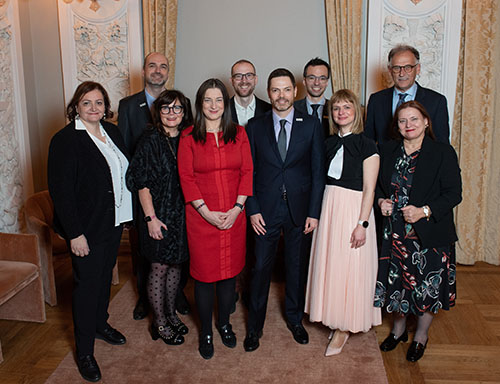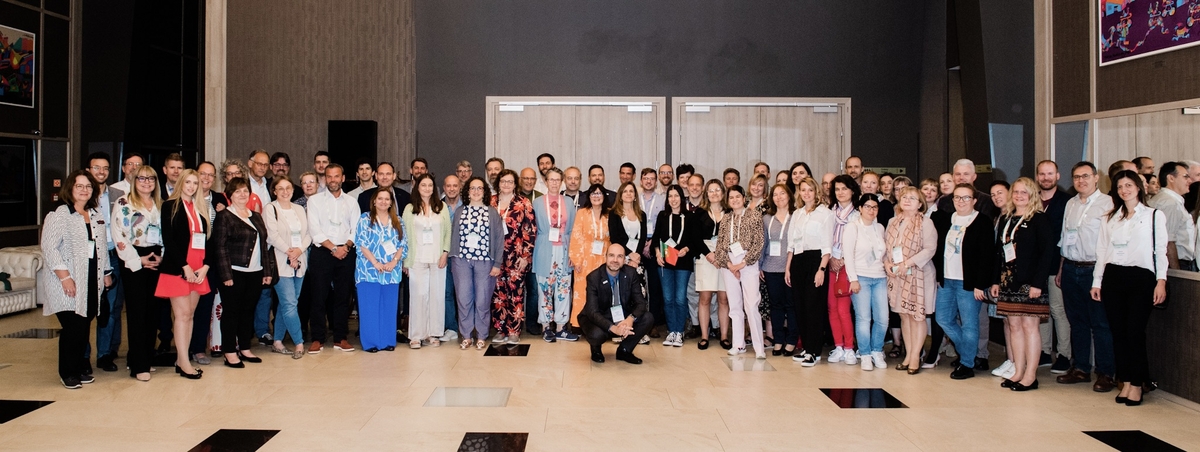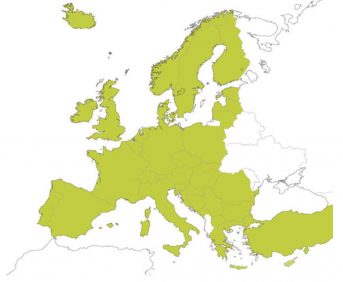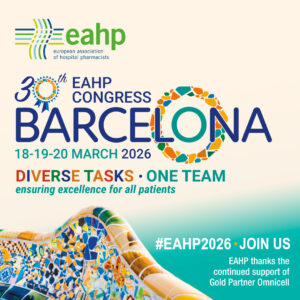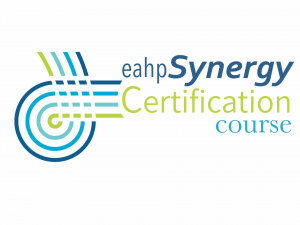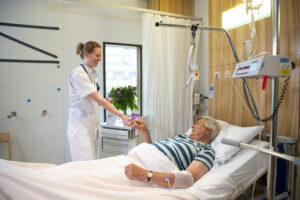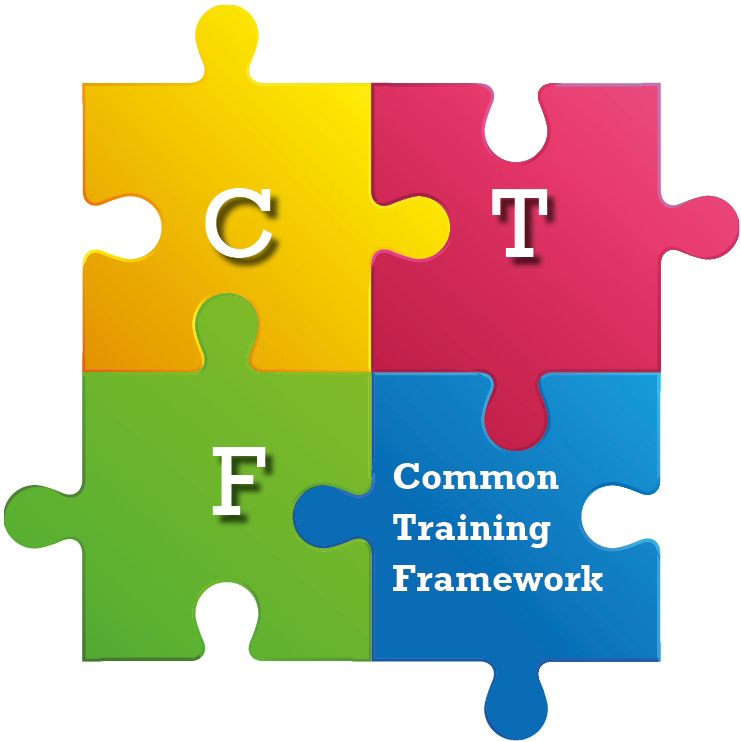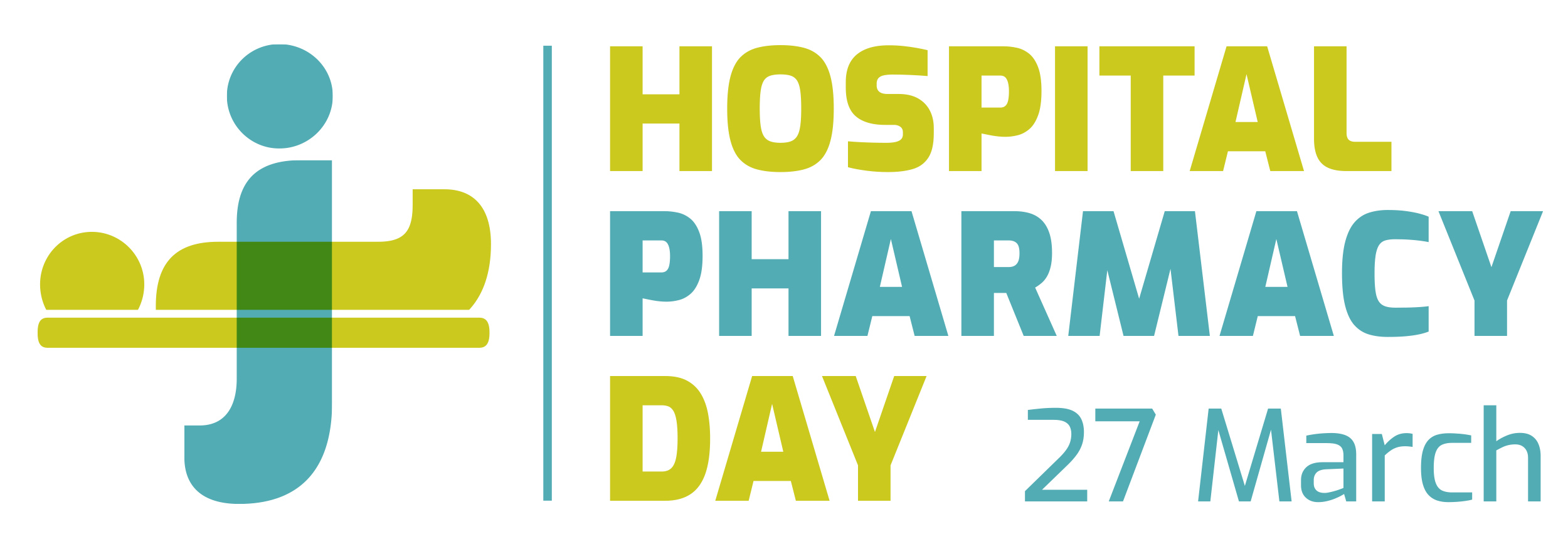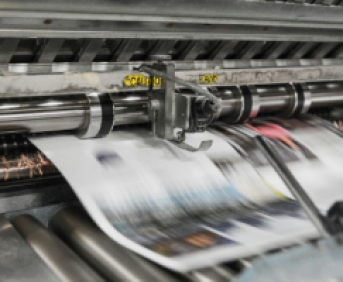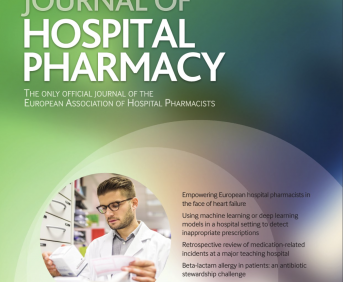Development of bags ready to use for parenteral nutrition in the preterm patient
Pdf

European Statement
Production and Compounding
Author(s)
Eleonora Castellana, Simonetta Felloni, Matilde Scaldaferri, Giuseppina Bonfante, Elena Maggiora, Francesco Cresi, Maria Francesca Campagnoli, Alessandra Coscia, Maria Rachele Chiappetta, Francesco Cattel
Why was it done?
The purpose was to provide the Neonatal-Intensive-Care-Unit (NICU) with ready-to-use bags that could improve patient safety by minimizing procedural incidents and maximize resource efficiency while providing clinically appropriate nutrition for the single PP.
What was done?
Seven standard bags (SSB), ready-to-use, have been formulated and developed for parenteral nutrition (PN) in preterm patients (PP). An assisted prescribing software was developed for selecting the most appropriate standard bags (SB).
How was it done?
The project was carried out in collaboration between pharmacists, nurses and neonatologist of NICU.
The composition of the SB was identified from the retrospective analysis of the types of individualized bags requested from the Pharmacy and from the analysis of the recommended ESPGHAN-Paediatric-Parenteral-Nutrition-2018 contributions.
What has been achieved?
SSB ready-to-use were identified:

The bags have been produced by an industrial partner according to Good Manufacturing Practice-Annex 1. The shelf life is 90 days.
The SSB were implemented successfully on the PP. Starting from 2021, approximately 250 bags/month have been used, with a reduction in individual preparations by the Pharmacy of approximately 80%.
This approach showed results in terms of clinical results and economic outcomes. The computer program guided the physician to the most appropriate standardized solution.
Early and timely administration of ready-to-use PN showed reduced weight loss and a shorter duration of PN than individualized bags (21 vs 25 days).
What next?
The project described has shown benefits including improved nutrient supply, fewer prescribing and administration errors, lower risk of infection, cost sav-ings, ready availability of the bags 24/7 and safe and effective supply of SB. This project will be strengthened in our hospital.
Nationwide German standardised concentration list for continuous infusions in intensive care patients
Pdf

European Statement
Patient Safety and Quality Assurance
Why was it done?
In intensive care patients, numerous drugs are continuously administered. Standardised concentrations and dose adjustment by infusion rate are recommended to minimise medication errors, e.g., by the EAHP Special Interest Group for investigating Medication Errors in Intensive Care Units. This principle is also followed more and more in German hospitals. However, there is a lack of a national standardised concentration list.
What was done?
The joint working group aimed to develop and implement a nationwide standardised concentration list for continuously administered infusions in intensive care patients in German hospitals.
How was it done?
A joint working group of the German Society of Hospital Pharmacists (ADKA e.V.) and the German Interdisciplinary Association of Intensive and Emergency Care (DIVI e. V.) compiled a nationwide continuous infusion standard for intensive care patients. Based on a national survey conducted in 2021, a list of plausible, commonly used drugs and concentrations was compiled. Drugs and concentrations to be listed were further evaluated in a multi-stage process based on predefined criteria (e.g. volume sparing concentration, one concentration per drug [where applicable], preferring ready-to-use medication, operational considerations).
What has been achieved?
A joint working group of the German Society of Hospital Pharmacists (ADKA e.V.) and the German Interdisciplinary Association of Intensive and Emergency Care (DIVI e. V.) compiled a nationwide continuous infusion standard for intensive care patients. The national continuous infusion standard encompasses 41 drugs and 49 standard concentrations, recommended vehicle solutions and data on the physicochemical stability of the infusions during administration. Thirty-seven active substances are listed with one concentration, heparin with two concentrations, epinephrine and sufentanil with three concentrations, and norepinephrine with four.
What next?
Healthcare professionals in German intensive care units are encouraged to adopt this standardised concentration list to improve medication safety. Flowcharts provided by the working group will facilitate the implementation of the defined standard concentrations.
90% reduction of medication waste by reusing returned medication from medical wards
Pdf

European Statement
Selection, Procurement and Distribution
Author(s)
Douwe van der Meer, Peder Nygard
Why was it done?
In our hospital 30% of the daily distributed medication for individual patients was not administered. Reasons for not administering were for example lack of need because of patients clinical performance, discontinuation of prescriptions or early discharge. Because of safety concerns, like mix-ups, our standard procedure was to discard all returned medication. This resulted in a waste of about 220.000 pills annually.
What was done?
We reduced medicine waste by 90% by reusing returned medication from our medical wards. With this result we made an important step for our hospital to meet the national sustainability goals in the Dutch ‘Healthcare Green Deal (3.0)’.
How was it done?
Reusing returned medication brings multiple safety concerns. By performing a prospective risk analysis we identified three major risks: mix-ups, expired medication and accepting non-qualitative packages (like slightly opened blisters or incomplete labels). With these risks identified we redefined our distribution process on four key elements: 1) Every medication has a barcode on unit level and if not, is labelled by our team through duplicating the ‘Falsified Medicine Directive’-barcodes to small 2D barcode labels which includes expiration date. 2) All returned medication is checked by a pharmacy employee on major quality aspects. 3) Returned medication is placed in a separate ‘return-box’ in front of the original stock inside the distribution cabinet. 4) Expiration dates are checked more frequently and are checked upon distribution and administration through barcode scanning.
What has been achieved?
The new distribution process was implemented in all of our eight distribution cabinets and resulted in saving 90% of the returned medication; witch amount to 200.000 pills and 70.000 euro savings annually. On average we work with 6 employees daily, who need 15 minutes extra per person per day to process returned medication.
What next?
Our goal is to save all returned medication that meets our quality standards. 5% of the returns that are not reused are medicines not included in the assortments of the specific distribution cabinet, so extra logistic and administrative steps are needed to place them back in the pharmacy stock. We are exploring new ways to make this next step in reducing medication waste further.
Routine generation of real-world evidence: an integrated system for the systematic recording of clinical data on innovative outpatient hospital medicines
European Statement
Patient Safety and Quality Assurance
Author(s)
Manuel Mazarío-García, Amparo Molina Lázaro, Gemma Garrido Alejos, Ferran Sala-Piñol, Núria Juvanet Ribot, Lluís de Haro i Martin
Why was it done?
In 2011, the Catalan Health Service (CatSalut) introduced the Registry of Patients and Treatments of Outpatient Hospital Medicines (RPT-OHM) within their Standard Health Record Platform (SHRP) for the comprehensive evaluation, effectiveness and safety of OHM. CatSalut requires fulfilling RPT-OHM before medicines billing. However, SHRP lacked integration with ICS’ clinical and billing information systems.
What was done?
The Catalan Health Institute (ICS) is the largest healthcare provider in Catalonia and is made up of eight hospitals. The ICS developed and implemented a structured data collection tool named the Hospital-Information-System-integrated Registry of Patients and Treatments (RPT-HIS). This tool systematically collects a range of critical information, spanning from prescription inception to treatment cessation, such as:
• Administrative patient, prescriber, and treatment particulars.
• Active ingredients or combinations, initiation and termination dates, therapeutic indications, and ICD-10 diagnoses.
• Baseline clinical variables recorded upon treatment commencement.
• Dynamic clinical data captured or typed from medical records throughout follow-up according to predefined intervals.
• Cessation variables detailing reasons for treatment discontinuation.
How was it done?
At ICS’ headquarters, a dedicated team of internal business analysts and functional support officers, along with contracted developers, collaborated to design, implement, and maintain RPT-HIS. Monthly coordination meetings ensure efficient integration of new OHM and monitor the registry’s progress. Simultaneously, a network of local reference pharmacists emerged in all eight ICS hospitals, fostering continuous knowledge exchange and driving innovative enhancements.
What has been achieved?
In the first half of 2023, 52,907 initiation, follow-up, or discontinuation forms were completed. Among these, 93.7% met all preset treatment-specific validation rules, underscoring the initiative’s effectiveness. Subsequently, utilization and budgetary impact reports across ICS hospitals have been elaborated, covering general and special patient populations, indicating a positive impact on operational efficiency and patient care.
What next?
In the near future, the real-world data amassed and stored in RPT-HIS could help to underpin refined drug therapy, optimize health outcomes, and strategically position medicines for specific conditions, also aiding in selection and purchase. This initiative serves as a model of good practice, demonstrating the potential of integrated data collection systems, aligned with the routine process of OHM utilization, to improve patient care. The successful implementation of RPT-HIS suggests its viability for adoption in other healthcare settings.
Computerised registration of drug prescriptions in the operating room during cardiac surgery: simplicity and traceability
Pdf

European Statement
Patient Safety and Quality Assurance
Author(s)
Elisabetta Volpi, Giuseppa Lo Surdo, Mattia Lorenzini, Anna Carmignani, Debora Luccetti, Stefania Baratta, Mario Cossu, Maurizio Mangione, Pierantonio Furfori, Monica Baroni, Paolo Del Sarto, Stefania Biagini
Why was it done?
This implementation was designed to provide a safe tool for the particular context of the operating room, in which prescription and administration are actions usually urgent and concomitant. The program suggests a rapid list of prescriptions standardized for adult patients (i.e. dose, diluent, bolus/drip) and allows to register any other drug or modify default information, respecting the rules for a clear prescription before registration.
Our aim was to demonstrate the possibility to validate this program and prove its functionality.
What was done?
In 2019 a multidisciplinary group (doctors, nurses, pharmacists, computer scientists) created an electronic program dedicated to the Cardiac Operating Room of the Heart Hospital, Fondazione Monasterio (Italy), which allow the prompt registration of drug prescriptions and administrations. Furthermore this program guarantees traceability of the drugs administered by the nurses, in order to improve medication safety practice.
How was it done?
This program was created into the electronic prescribing system available in Fondazione Monasterio. The standardized prescriptions already in use in the operating room were reviewed by a pharmacist, consulting the information in the Summary of Product Characteristics (SmPC), in the literature or by contacting the company that holds the MA. For each discrepancies identified a solution was proposed and shared with the working group, in order to validate a definitive list.
The prescriptions extracted by the IT Systems unit 6 months before and after the implementation of the new program were therefore analyzed.
What has been achieved?
A list of 182 standardized prescriptions was validated and reported in the program.
Among the 10,320 prescriptions made before the new program none had traceability of the drugs administered, while the 8,730 of the following period were complete and 99.6% of them fell within the standardized prescriptions, demonstrating the functionality and correct selection by the working group.
The development of a program for the computerized registration of prescriptions made during the surgery, which respond to the requirements of drug safety and traceability, represents an example of good practice.
What next?
We have implemented this tool in the paediatric population, with particular precautions due to the weight variability (i.e. dose/kg). The next step could be integration with further assessments (e.g., kidney function evaluation) and the transfer to other settings
Implementation of a protocol to ensure continuity of pharmaceutical care in hospitalised outpatients
Pdf

European Statement
Clinical Pharmacy Services
Author(s)
MARCELO DOMINGUEZ CANTERO, CARMEN MARIA DOMINGUEZ SANTANA, MARCELINO MORA CORTES, ESMERALDA RIOS SANCHEZ, JUAN MANUEL BORRERO RUBIO
Why was it done?
Patients who withdraw medication from outpatient pharmacies in Spanish hospitals are provided with pharmaceutical care and pharmaceutical care stratification tools in specific outpatient pharmacy consultations. These patients are usually multi-pathological with multiple drug interactions, contraindications, and important adverse effects. Therefore, during the hospital admission of these outpatients, it was appropriate to provide continuous care from the hospital pharmacy. Before the implementation of the protocol, there was no specific and systematic follow-up of hospitalized outpatients.
What was done?
Implementation of a protocol that provides pharmaceutical care to outpatients during hospitalization, ensuring continuity of care through the pharmacy service.
How was it done?
The main problem with the implementation was the real-time detection of hospitalized outpatients. The development of a software tool to facilitate the location of patients provided an impetus for the implementation of the project. The computer tool selected patients who met the inclusion criteria (hospitalized outpatients with medication withdrawal in the outpatient unit in the last two months). Patients treated with erythropoietin and colony stimulants were excluded.
What has been achieved?
Seventy-nine patients were included in the study between April and September 2023; 62.1% were male. Main pathologies included 41.9% oncohaematologic diseases, 18.9% human immunodeficiency virus, and 17.7% immune-mediated inflammatory diseases.
The reason for admission was related to the pathology for which outpatient medication was withdrawn in 27 patients (34.2%), and six patients (7.6 %) were admitted due to an AE of the medication withdrawn in outpatients. Pharmaceutical interventions (PI) were performed in 21.5% of the patients reviewed, and 76.5% were accepted. PI reasons included discontinuation of treatment (64.7 %), modification (17.7 %), initiation (11.8 %) and monitoring (5.9 %).
What next?
With our protocol, we want to show that outpatients within the pool of patients admitted to a hospital are a priority target group. For these patients, the hospital pharmacist can improve treatment during hospitalization with a high degree of pharmaceutical intervention.
Enhancing of patient-centric care and employee satisfaction: the “all activities in alignment” programme
Pdf

European Statement
Clinical Pharmacy Services
Author(s)
Afke van de Plas, Judith Baars-Timmermans, Hanneke Goossens, Ellen Frankfort
Why was it done?
This initiative aimed to improve:
1. Personalized Healthcare and Patient Satisfaction: In the pursuit of strict regulatory compliance, pharmacy employees sometimes overlooked the pharmacy’s fundamental mission. With limited direct patient interactions, staff were often unaware of patients’ unique needs and preferences.
2. Employee Satisfaction: The program aimed to empower employees by reducing excessive regulations and allowing them to make decisions that aligned with the overarching mission, with the expectation that this would enhance their job satisfaction.
3. Enhancing Awareness of the Pharmacy’s Mission: By connecting all activities to the pharmacy’s core mission, the program attempts to improve personalized healthcare and patient and employee satisfaction.
What was done?
Maastricht University Medical Centre’s hospital pharmacy introduced the “All Activities in Alignment with Underlying Aim” program.
How was it done?
The program’s implementation involved several key steps:
1. Defining the Underlying Aim and Key Principles: The program team identified the overarching aim as “Happy Patients and Employees” and established four key principles: “See the Person Behind the Patient,” “Focus on What Is Possible,” “Take the Lead Yourself,” and “From Rules to Self-Regulation.”
2. Employee Engagement: The new policy was presented and discussed in detail during a meeting with all employees.
3. Communication: Periodic newsletters and monthly team meetings were used to share illustrative examples and foster discussions about initiatives.
4. Evaluation: Customer and employee satisfaction were measured through surveys before and after program implementation.
What has been achieved?
The outcomes of the program were highly encouraging:
• The adoption of “Happy Patients and Employees” as the guiding aim resulted in numerous instances of personalized healthcare and enhanced collegiality.
• The four key principles empowered employees to align their actions with the program’s aim. The empowerment to decide in the patient’s interest increased from 58% to 73%.
• Surveys indicated improved customer and employee satisfaction.
• Enhanced awareness of the pharmacy’s mission (from 47% to 66%) led to stronger connections between activities and the overarching aim (from 73% to 85%).
What next?
The “All Activities in Alignment” program serves as a successful model for other hospital pharmacies seeking to elevate personalized healthcare, patient and employee satisfaction. Its simplicity and effectiveness make it a valuable initiative worth considering for broader implementation.
Pallet box implementation: a combination of improved working conditions, storage and waste optimisation?
Pdf

European Statement
Selection, Procurement and Distribution
Author(s)
Elisabeth CESAR, Ludivine LECHEVRETEL, Adrien NIERENBERGER, Laurent DIETRICH, Anne FEGER-FALK
Why was it done?
We decided to experiment this new solution on coronarography-packs, which presents the biggest rotation among surgery-packs (5,392 units estimated for 2,023), in order to improve working conditions of logistic workers, decrease musculoskeletal disorders (MSD) and optimise storage.
What was done?
Pallet box have been implemented as a new logistic solution for surgery-packs in our hospital pharmacy on a proposal from one of our biggest suppliers. The aim of this comparative study between 52-pack pallet boxes and the previous storage solution by 4-pack boxes was to assess the potential benefit on handling work, storage, waste and its economic impact.
How was it done?
In order to compare these two solutions, we clocked the time and evaluated the cost of transport from delivery gate to storage room and healthcare-unit order-picking step (from picking up the first pack to cardboard flattening). We also estimated the amount of waste associated.
What has been achieved?
Pallet-boxes enable a 24% room saving (52 pallet-spots yearly (2 pallet-boxes piled on one spot) instead of 68) and a 31% global time saving (22 hours yearly (13h transport + 9h order picking) instead of 32 hours (17h transport + 15h order picking)). Time saving on order picking was 40%: picking step of one pack from a pallet box requires on average 6 seconds whereas 10 seconds were needed from 4-packs-boxes. Yearly 104 pallet-boxes (603 kg of empty cardboards) will be manipulated whereas 1,348 4-pack-boxes (1,213 kg) used to be handled resulting in a 2-fold decrease. Even though pallet-boxes halve cardboard-waste, they represent 1.5 times more wooden-pallets’ waste (104 versus 68). Furthermore the price of coronarography-packs are impacted by a 2% increase representing around 4,100€ yearly which is not balanced by savings on transport or order picking (10h ≈ 150€).
What next?
Logistic workers are unanimously satisfied in implementing pallet-boxes as it facilitates their work on many aspects: pallet transport, order picking, waste disposal. Despite being costlier, a decision has been made to implement pallet-boxes in the long-term in order to improve waste management and working conditions of logistic workers. Our hospital pharmacy is already thinking about extending pallet-boxes to other references in order to assess more precisely their impact on MSD in logistic workers.
A new medication-use process implemented in the perioperative setting
Pdf

European Statement
Patient Safety and Quality Assurance
Author(s)
Almudena Ribed, Alvaro Gimenez-Manzorro, Beatriz Torroba-Sanz, Ana De Lorenzo-Pinto, Maite Portas-Gonzalez, Maria Dolores Ginel-Feito, Pilar Cabrerizo-Torrente, Maria Luisa Martin-Barbero, Ana Herranz-Alonso, Javier Hortal-Iglesias, María Sanjurjo-Saez
Why was it done?
There is a high prevalence of medication errors in the perioperative setting. Health organizations highlight the need for effective practices to ensure safe medication use. A group of pharmacists, surgeons, anaesthesiologists, nurses, and IT technicians coordinated by the management was formed in 2020. Failure mode and effects analysis (FMEA) of the perioperative use of drugs was performed in 2021. The group detected up to 25 failure modes and conducted a bibliographic review to gather and prioritise the implementation of safety practices.
What was done?
We re-engineered the process of medication use in the perioperative setting, from pre-admission to discharge, and implemented safety practices to improve safe medication use in the daily practice.
How was it done?
Obstacles were overcome as a result of the multidisciplinary teamwork, management support and the safety culture existing in our hospital. In addition, we listened to health professionals’ opinions, provided monthly information sessions in the Anaesthesia and Pharmacist Department in 2022 and disseminated information through the hospital website.
What has been achieved?
Eight safety practices were implemented in daily practice:
1.Eight safety practices were implemented in daily practice:
1. Implementation of automated dispensing cabinets.
2. Identification and recommendations for high risk drugs.
3. Standardisation of anaesthesia and difficult airway trolleys.
4. Preparation of general anaesthesia trays with ready to administer drugs.
5. Design, development, and implementation of a one-step computerised provider order entry (CPOE) in the operating room, with bar code administration technology.
6. Implementation of a pharmaceutical care programme for surgical patients based on medication reconciliation in all transitions of care.
7. Implementation of new alerts in the clinical decision support system linked to the CPOE to improve pain, anticoagulation, and antibiotic management in the surgical patient during follow-up.
8. Development of new protocols for perioperative management of chronic medications, anticoagulation, diabetes, and antibiotic prophylaxis in the surgical setting.
What next?
The new medication-use process describes a practical and real approach to promote perioperative patient safety in the daily practice. Transfer into other centres is achievable by motivating healthcare professionals, engaging in safety culture and creating multidisciplinary alliances. There is a need to assess the impact and evaluate these safety practices to ensure ongoing improvement.
A risk-based choice of syringes and associated equipment for compounding and intravitreal administration of drugs for wet age-related macular degeneration
Pdf

European Statement
Production and Compounding
Author(s)
Espen Gleditsch, Dag Fossum
Why was it done?
There are no available syringes with CE approval for intravitreal administration. The CE approval for sterile single use syringes covers dosage and sterility, but not the special needs associated with intravitreal administration. The choice of syringe and associated equipment therefore have to be based on a risk assessment. The intravitreal administration includes increased patient risk regarding sterility (infection), particles (inflammation), injection volume (ocular pressure), silicone oil (floaters in the vision) and technical performance (leakage and compatibility with needle). The aim of this work was to find the syringes, associated equipment and compounding process that present least risk to the patients.
What was done?
Oslo hospital pharmacy delivers ready to use syringes for intravitreal administration of drugs for wet age-related macular degeneration. The pharmacy has in cooperation with the eye department at Oslo university hospital done a risk assessment in 2023 to decide syringes and associated equipment for compounding and administration.
How was it done?
The syringes historically used for intravitreal administration in Norway are Insulin syringes with prefixed needles (BD), Inject F syringes (BBraun) and Zero Residual syringes (SJJ Solutions). The needles used are TSK Low Dead Space needles and Zero Residual needles. The compounding methods are filling of the ready to use syringe from a bulk syringe by a needle or use of a Zero Residual bubble adaptor. All ready to use syringes are compounded in isolators with grade A in the working chamber, delivered with needle or cap, and packed in sterile bags. The risks associated with each syringe, needle and compounding process were assessed with a Failure Mode Effects Analysis Method.
What has been achieved?
The risk assessment shows that the risk to the patients are lowest when administering drugs for wet age-related macular degeneration with Zero Residual syringes and needles, filling the syringes with bubble adaptor and deliver with cap. This will give the lowest risk score regarding sterility, particles, injection volume, silicone oil and technical performance.
What next?
This work is relevant for other pharmacists and prescribing practitioners when assuring that syringes and associated equipment are of appropriate quality and suitable for intended use.
